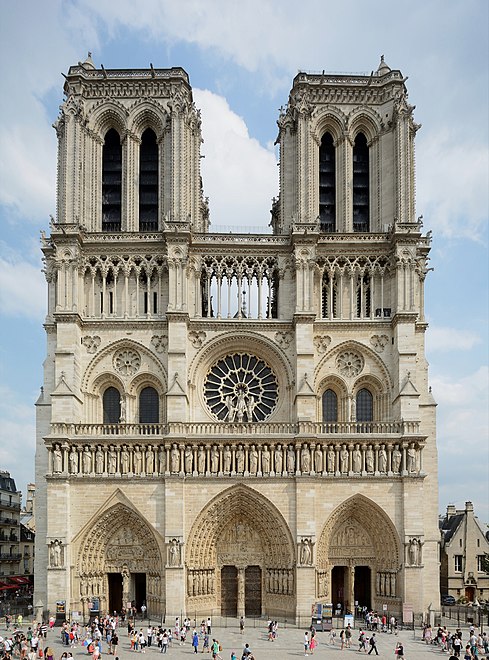
I’ve been very moved by the fire that destroyed so much of the Notre-Dame Cathedral. Given this happened during the Holy Week just before Easter, I wrote the following essay and original music to accompany it. Whether you observe Easter or Passover, I hope you enjoy it.
I watched with disbelief as the spire of the Notre-Dame Cathedral erupted into flames, toppling and turning upside down – plunging into the heart of the church, sending what seemed a searing fatal blow to this magnificent structure. Firefighters below fearlessly fought the flames while onlookers lamented…Notre-Dame might be beyond hope.
Click Below to hear me narrate this post over original music I composed for it. Piano performed by Ben Schwendener.
For a moment, my memory flashed back to September 11, 2001 when the World Trade Center’s Twin Towers stood engulfed in flames; eventually toppling to the ground in total ruin.
Both are examples of iconic symbols of two great western cities. The World Trade Centers symbolized New York as the financial epicenter of the world; Notre-Dame symbolizes Paris as an iconic spiritual center of the world.
But Notre-Dame represents so much more. Begun in 1160 and consecrated to the Virgin Mary, it isone of the finest examples of French Gothic architecture. Its elaborate rose windows and fine works of art and sculpture links to nearly 900 years of history, not only of France, but also of Western civilization. Notre-Dame stands for beauty, history, continuity, spirituality, and hope.
It has endured natural disasters, the French revolution and the Nazis. It was the site of Coronations, baptisms, and funeral processions and the liberation of Paris in 1944. It was even the setting for Victor Hugo’s novel, The Hunchback of Notre-Dame.
Like the loss of a loved one, mourners poured into the streets of Paris, held hands with strangers and sang hymns. People of different faiths and countries came together to celebrate the strength what the church provided; continuity and evolution of western culture; the religious masses that brought comfort and hope to millions, and the masses of people, some 23 million annually, who visit the cathedral making it the most visited monument in Paris.
As plumes of smoke billowed out of Notre-Dame, people reacted as if they were experiencing the loss of a loved one. Mourners poured into the streets of Paris, held hands with strangers, and sang hymns. People of different faiths and countries came together to draw strength from each other as they celebrated the strength of the church – its continuity and evolution of western culture; its celebration of masses that brought comfort and hope to masses of people. The cathedral touched the soul of some 23 million annual visitors.
Ironically, this disaster happened Holy Week, the week right before Easter, the most important Christian festival, that celebrates the resurrection of Jesus Christ.
We can draw on the hope this season brings for the strength to move forward. The church was not completely destroyed. The stone towers of the front and much of its cathedral were preserved, though damaged. And many of the works of art were saved due to a renovation of the building that had just begun and required the art work to be moved to the Louvre for safekeeping. After the fire, many brave firefighters entered the building despite burning embers raining down on them to save other priceless pieces that might otherwise have been lost.
Drawing on other traditions, in Judaism, when one comes to visit a grave, stones are brought instead of flowers because stones better reflect the permanence of the soul. The stone façade of Notre-Dame is symbolic of the permanence of the soul of the church. Like the mythical bird Phoenix, Notre-Dame is expected after hundreds of years, to rise from the ashes of its funeral pyre with renewed youth. True to the Easter spirit, the Cathedral of Notre-Dame can be resurrected metaphorically from the remaining stones that reflect the permanence of the church’s soul, and once again provide the hope, history and humanity it brings.
This disaster has brought people from around the world a little closer – something much needed in these fractured times.
Please share this post with friends and your comments below.





